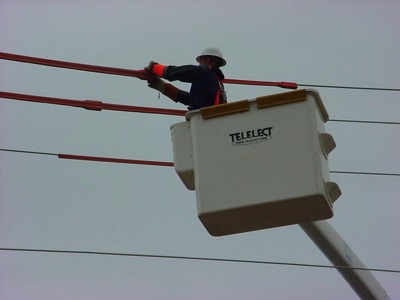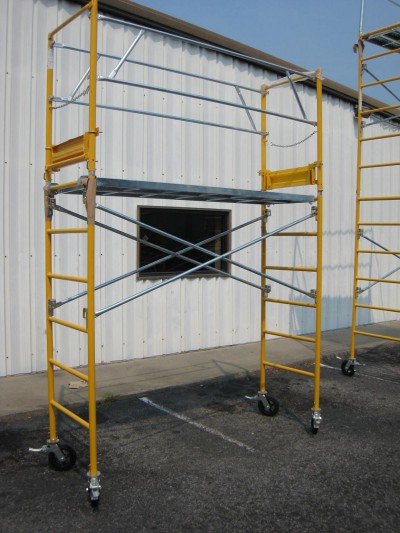The precaution of booting is commonly implemented when a sign is to be installed close enough to the overhead power lines that the movements of the crane or load could encroach upon the minimum safe clearance limit. There is a cost for this service, which project managers should include when preparing their bids.
Underground utility lines can also present hazards. It is important to locate these lines and obtain clearance from the utility company before beginning any excavation work for the installation of a sign. Otherwise, workers could strike a power line while excavating and be electrocuted or could damage a gas line and cause an explosion. And besides such serious and personal hazards, even minor damage to any type of utility line is going to be very costly to repair.
Getting back to working with cranes, the second leading cause of fatalities is when a worker is struck during a crane’s movement of the load. Before moving any load, crane operators, riggers and other ground personnel should always scan a 360-degree circle to ensure no hazards exist.
Workers on the ground should never stand directly beneath a suspended load and taglines should be used to control the load whenever it is being hoisted. The taglines enable workers to accomplish this without standing too close to the ‘drop zone’—i.e. the area where a load would fall in the event of operator error or equipment failure.
Ladders
Sign installers use ladders on a daily basis, ranging from step ladders to extension ladders to extension trestle ladders (also known as ‘A-ladders’). Unfortunately, because ladders are such commonly used equipment, it is often assumed everyone knows the proper ways to use them. The substantial number of ladder-related incidents seen in the sign industry, however, indicates this assumption is not valid.

‘Booting’ is a common precaution when a sign will be installed close enough to overhead power lines that the movements of the crane or load could encroach upon minimum safe clearance limits.
There are a few useful rules of thumb when positioning an extension ladder. The distance from the base of the ladder to the wall, for example, should equal approximately 25 per cent of the total ladder length. So, if a ladder is extended to a length of 12 m (40 ft), then its base-to-wall distance should be about 3 m (10 ft). If the ladder is placed at too high of an angle (i.e. the base is too close to the wall), it can end up tipping over if the worker shifts his/her weight backwards from the wall.
The following are some more tips for ladder safety:
- Inspect ladders for any damage/defects prior to use.
- Ensure all ladders are stable and on solid ground. Never set up a ladder where it can be jarred or knocked over (e.g. close to a curb or in front of an unlocked or unguarded door).
- Do not use a ladder outdoors in windy conditions.
- Follow all of the manufacturer’s recommendations, including those regarding weight ratings, safety labels and the highest level at which it is safe to stand.
- When using a ladder to access a roof area, the end of the ladder should extend at least 0.9 m (3 ft) higher than the roof edge.
- For further safety, secure the top, bottom or both ends of the extension ladder with adequate ties (e.g. rope) to prevent the ladder from sliding laterally.
- Never climb a ladder while wearing wet, muddy shoes. Make sure ladder rungs are not slippery.
- Keep your hands free of tools and materials while climbing. Use a tool belt or attach a rope to a tool bucket and pull it up after the climb.
- Never try to adjust or move a ladder while standing on it.
- Only let one person use a ladder at a time.
- If a ladder is found to be damaged in any way, ‘red tag’ it immediately and then either repair or destroy it.
Scaffolding
Scaffolds also require caution. Their use is subject to many of the same safety rules as ladders.
Level ground is important and the manufacturer’s maximum weight limits should always be followed. It is important to note scaffolds are not designed to support signs or other heavy objects; they are intended to support only the workers and their tools.
When erecting a scaffold, all required braces must be installed on each section before adding the next section above. Likewise, when disassembling a scaffold, it is important not to remove any side braces from the lower sections until the sections above have already been removed.






